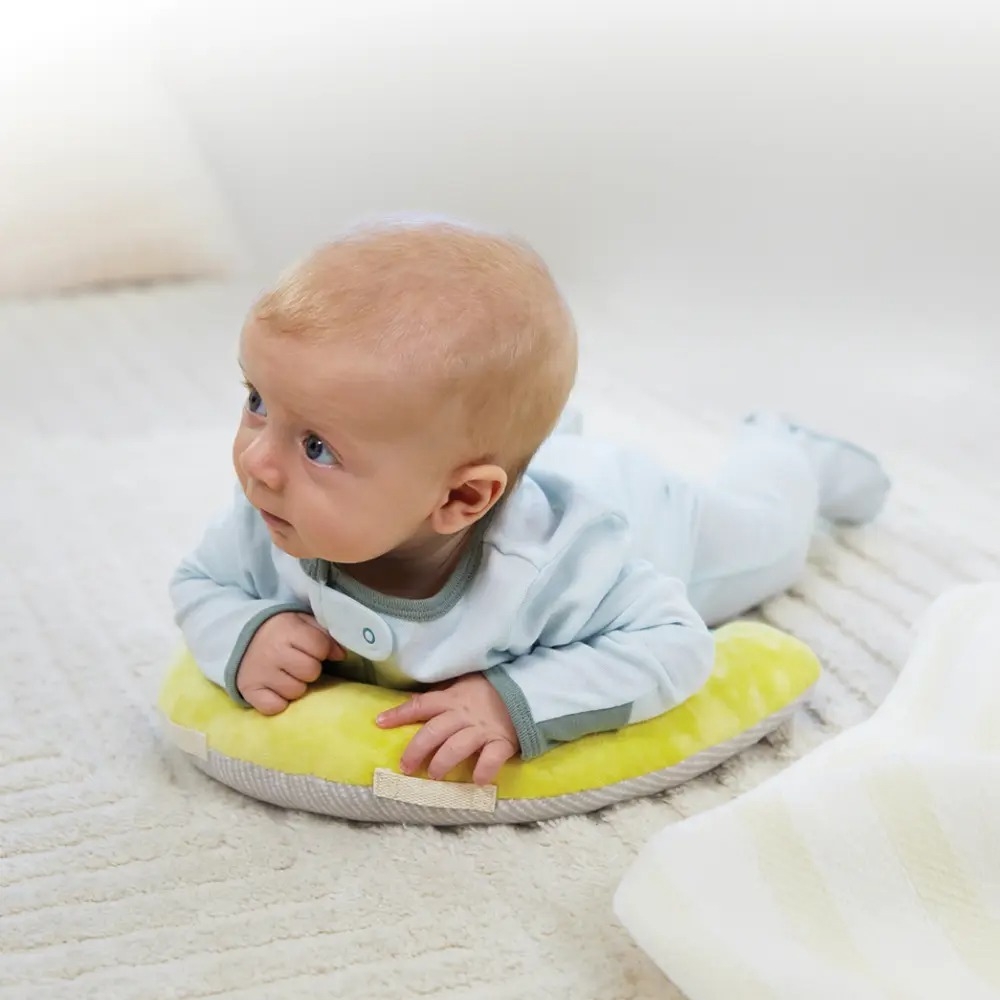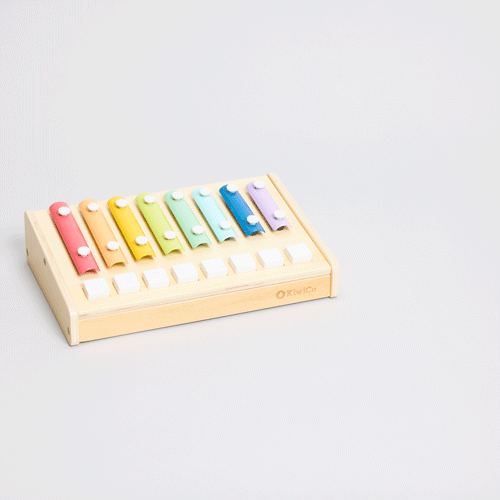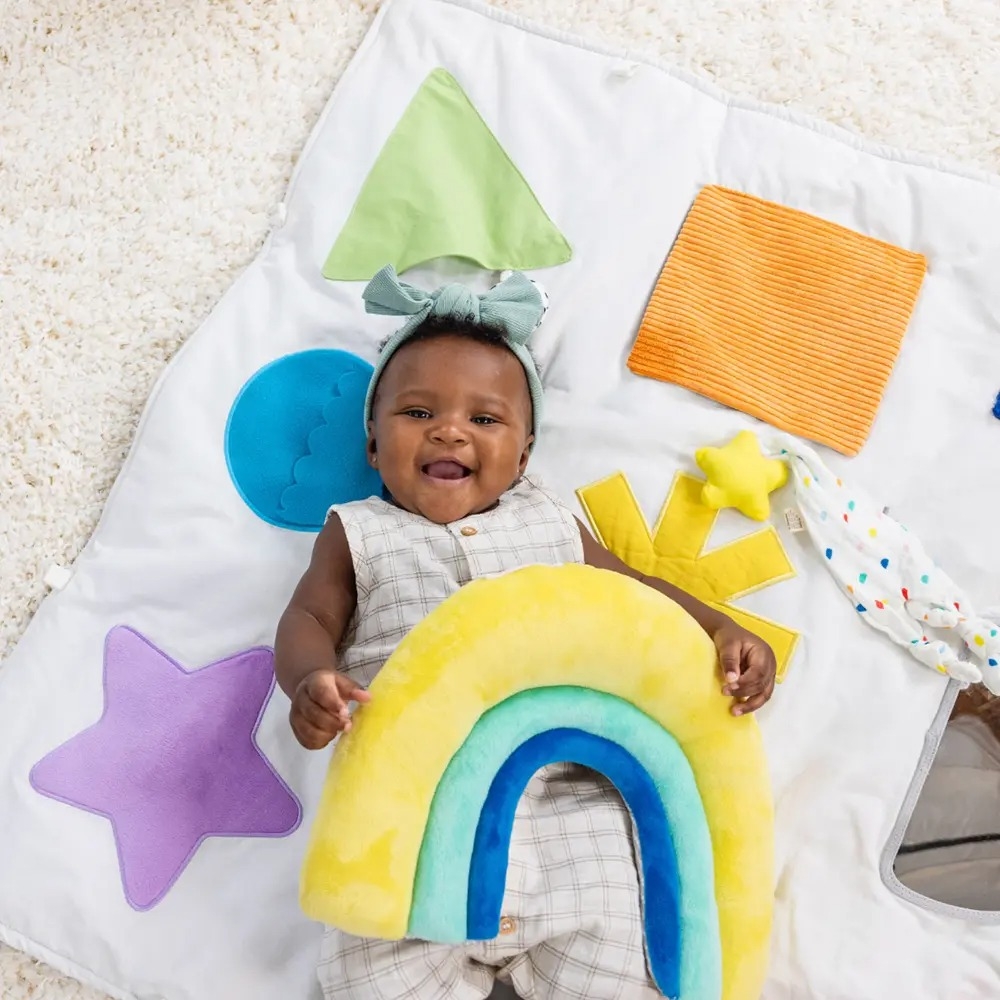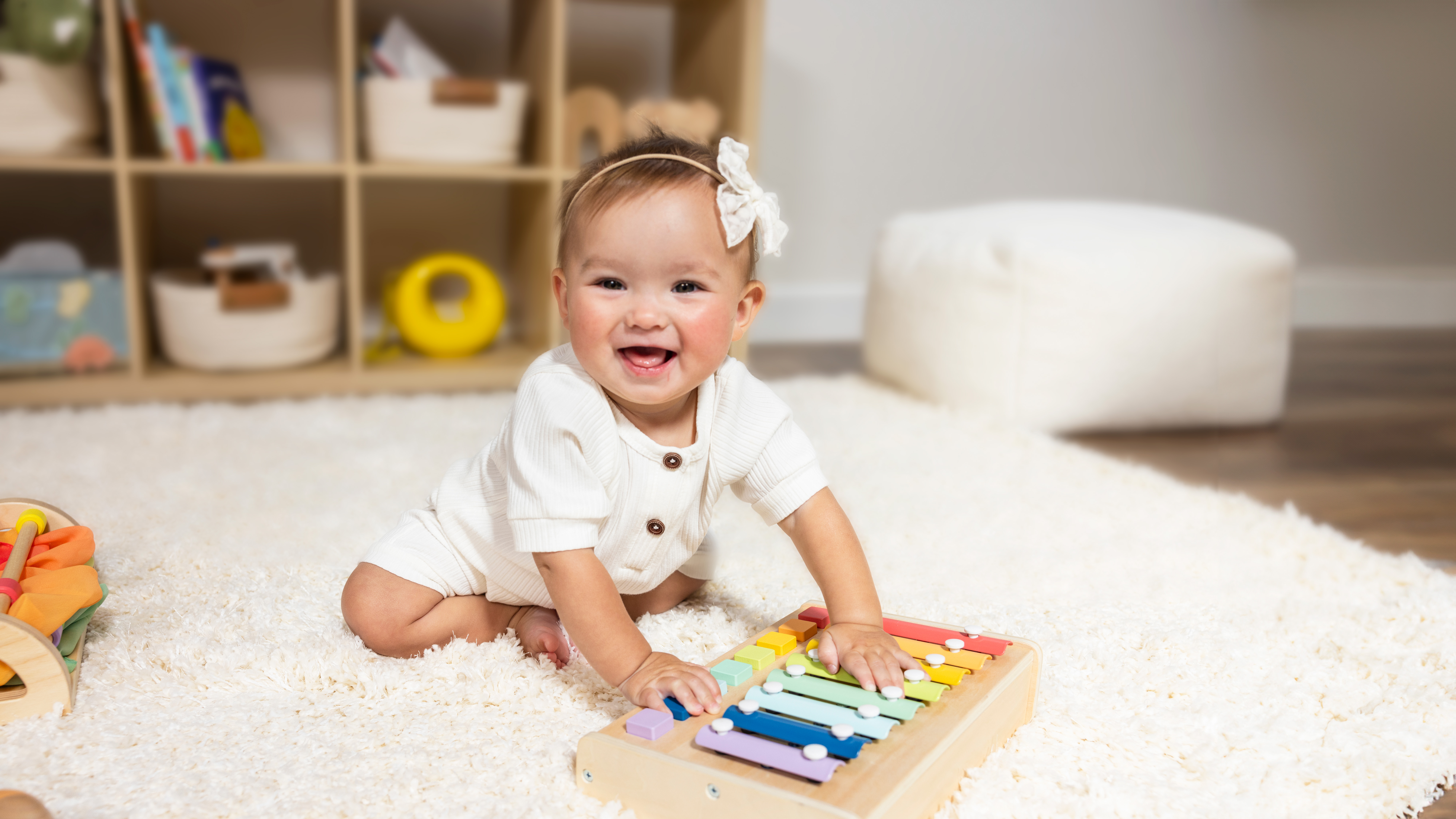Understanding Baby Development
Every baby is unique, and they all grow and learn at their own speed. According to the CDC, babies develop in four main areas: moving their bodies (motor skills), talking and understanding (language), thinking and problem-solving (cognitive skills), and getting along with others (social and emotional skills). Crawling is all about those motor skills, using big muscles in your baby’s arms, legs, and back.
Why Gross Motor Skills Matter
Gross motor skills are big movements your baby makes with their arms, legs, and body. These skills help your baby do all kinds of things, like sitting up, crawling, walking, and running. When babies practice these skills, they build strong muscles, good balance, and coordination — all things they’ll need as they grow!
When Do Babies Usually Start Crawling?
According to researchers at the University of Washington, most babies start crawling between 6 and 10 months, but some might start earlier or later. Remember: that’s okay! Every baby is different and develops at their own pace.
Early Crawlers (5-6 Months)
Some babies are eager to get moving and might start crawling as early as 5 or 6 months. These early birds might start with a belly crawl, dragging their tummies on the floor.
Average Crawlers (7-10 Months)
Most babies start crawling between 7 and 10 months. This is when you might see the classic hands-and-knees crawl.
Late Crawlers (11 Months and Beyond)
Some babies take their time and might not crawl until 11 months or later. Some might even skip crawling and go straight to pulling up and walking instead!
Different Ways Babies Crawl
Not all babies crawl the same way. Here are a few ways they might get around:
Classic Crawl
The classic crawl is the most common one people think of when they imagine a baby crawling. Here, babies move on all fours, using their hands and legs to propel themselves forward. Let's take a closer look:
How It Works: Your baby will lift one hand and the opposite knee at the same time, then switch to the other hand and knee. This alternating pattern helps them move forward smoothly.
Benefits: This crawl helps develop coordination and balance. It also strengthens the muscles in their arms, legs, and core.
Commando Crawl
The commando crawl is also known as the belly crawl. Here, babies lie on their tummies and use their arms to pull themselves forward while their legs push from behind.
How It Works: Your baby will use their forearms to drag themselves forward while keeping their tummy on the ground. Their legs will push off the floor to help with the movement.
Benefits: This crawl is great for arm and shoulder strength, while also building the muscles in your baby’s chest and back.
Bear Crawl
In the bear crawl, babies keep their arms and legs straight as they move, resembling a bear walking on all fours. This crawl can be a bit more challenging for babies, but it's a fun and effective way for them to move around.
How It Works: Your baby will straighten their arms and legs and lift their body off the ground. Then, they’ll move forward by stepping with their hands and feet at the same time.
Benefits: This crawl strengthens the arms and legs even more than the classic crawl. It also helps with overall body coordination and balance.
Crab Crawl
The crab crawl is when babies move sideways or backward instead of forward (and it’s extra adorable, too!).
How It Works: Your baby will move one arm and the opposite leg to the side or backward. This sideways or backward movement can look a bit like a crab scuttling along.
Benefits: This crawl helps with side-to-side coordination and strengthens different muscles than forward crawling. It also enhances spatial awareness as your baby learns to navigate in various directions.
Bottom Scoot
Some babies prefer to sit on their bottoms and scoot around using their legs and hands. This is called bottom scooting or bottom shuffling.
How It Works: Your baby will sit upright and use their hands and legs to push and pull themselves along the floor. They might use one leg more than the other or both legs equally.
Benefits: Bottom scooting builds the muscles in the legs and hips. It also helps with balance and coordination while sitting.
No matter how your baby decides to crawl, each style is a step toward building strength, coordination, and independence. Enjoy watching your little one explore their world in their unique way, and make sure to keep cheering them on! If you’re eagerly awaiting the day your baby starts to crawl, remember that every baby’s journey is special, exciting, and will unfold at its own pace.
How to Help Your Baby Start Crawling
Want to help your little one get moving? Here are some fun and easy ways to encourage crawling:
Tummy Time

Tummy time helps build the muscles your baby needs for crawling. According to the National Institute of Health, giving your baby plenty of tummy time helps strengthen their neck, shoulders, arms, and back. That’s why we created our Tummy Time pillow, which is designed to gently support your baby's core so you can bond face-to-face.
Create a Safe Play Space
Make sure your baby has a safe, open area to practice crawling. Clear away any obstacles and give them a soft, clean surface to explore.
Use Toys
Place your baby’s favorite toys just out of reach to motivate them to move towards them. Bright, colorful, or musical toys can grab their attention and encourage crawling.

With its bright colors and cheerful notes, the Piano Xylophone and Shaker Set is the perfect toy to hit all the right keys in capturing your baby's interest and setting them on the path to crawling greatness!
Get Down on the Floor
Show your baby how it’s done by getting down on the floor and crawling yourself. Babies love to copy what their parents do!
Fun And Games
Turn crawling practice into a game. Play peek-a-boo or chase, and cheer your baby on as they move.
Signs Your Baby Is Ready to Crawl
How do you know when your baby is getting ready to crawl? Look for these signs:
Pushing Up
When your baby starts pushing up on their hands and knees during tummy time, they’re building the muscles they need to crawl.
Rocking Back and Forth
Babies often rock back and forth on their hands and knees before they start crawling. This is their way of practicing balance and movement!
Reaching for Toys
If your baby is reaching for toys while on their tummy, they’re getting ready to move towards them.
Sitting Up by Themselves
Being able to sit up without help is a sign that your baby has the core strength needed for crawling.
Keeping Your Crawling Baby Safe

Once your baby starts crawling, they’ll be exploring every nook and cranny! Here’s how to keep them safe:
Baby-Proof Your Home
Before your baby starts crawling, baby-proof your home. Cover electrical outlets, secure heavy furniture, and keep small objects out of reach.
Keep Floors Clean
Make sure your floors are clean and free of small objects that your baby might put in their mouth.
Supervise
Always keep an eye on your baby while they’re crawling to make sure they stay safe.
Use Safety Gates
Install safety gates at the top and bottom of stairs and block off rooms that aren’t baby-proofed.
Watch Out for Pets
If you have pets, make sure they’re comfortable with your baby’s new mobility. Always supervise interactions between your baby and pets.
FAQ
When Should I Be Concerned If My Baby Isn’t Crawling?
Remember, every baby is different. If your baby isn’t showing any interest in moving or crawling by 12 months, it might be a good idea to talk to your pediatrician.
Is It Normal for Babies to Skip Crawling?
Yes! According to NYU’s Dr. Karen Adolph, “crawling isn’t mandatory.” Some babies skip crawling and go straight to standing and walking. As long as they’re developing other skills, it’s usually not a problem.
How Can I Make Tummy Time More Fun for My Baby?
Make tummy time fun by getting down on the floor with your baby, using toys to grab their attention, and increasing the time gradually. Learn more about tummy time in our Tummy Time Tips & Tricks guide.
What If My Baby Crawls Backward?
Some babies start by crawling backward. This is normal (and usually just a phase) before they figure out how to move forward.
Should I Be Worried If My Baby Crawls in a Funny Way?
Not at all! Babies have all kinds of unique crawling styles. If you’re concerned, though, you can always ask your pediatrician.
One Crawl At a Time
Watching your baby learn to crawl is an exciting adventure. Remember, every baby is unique and will hit this milestone at their own pace. By providing a safe and encouraging environment, you can help your little one get moving. Happy crawling!
